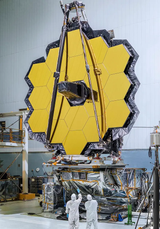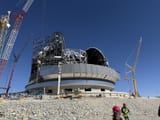>>16716412>>16716467On the longer term there are two serious projects aimed at directly imaging many earth-like planets around Sun-like stars, with enough detail to find life.
The first is NASA's Habitable Worlds Observatory, which grew out of the HabEx and LUVOIR studies. It is expected to be at least 6 meters across, with a super high contrast coronograph capable of imaging earth like planets (at ratio of planet to star brightness of about 10 billion). HWO would mainly target visible light, which would allow it to measure oxygen, ozone and potentially green planets on the surface. But it's not expected until the 2040's, and the recent cuts to the NASA astrophysics budget put it in danger.
ESA is also studying a complimentary mission, one working in the infrared but with the ability to directly image earth-like planets (unlike JWST). This requires a huge telescope, or an array of telescopes acing as an interferometer. The mission is called LIFE, but a similar mission was studies before (ESA's Darwin and NASA's TPF-I). The real challenge is that the telescopes have to fly independently with incredibly precision a few hundred meters apart. LIFE would work in the mid infrared, it could detect molecules like ozone, it would also measure the surface temperature of these planets (which HWO cannot). LIFE is in a long list of missions being built, and if it happens at all it will be 2050+.
So no JWST isn't the peak. The infrared is powerful, but it only tells you some things about these planets. Ultimately transit spectroscopy is limited. Direct imaging is much harder.







